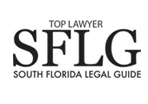Catastrophe model given credit where credit may not be due
As the South fights floods and tornadoes, Florida’s governor is deciding if he should sign an insurance bill that is heavily weighted for the industry and, according to critics, not so much for consumers. We’ve talked about the bill before, especially in light of the industry’s contention that reserves will be wiped out from hurricane claims after that overdue category 5 storm hits.
Today, we want to add some information to the discussion: The insurance industry may be relying heavily on a flawed risk management tool.
Setting insurance rates is a guessing game. The trick is to make it an educated-guessing game. Setting rates with a dartboard and a few free throws is a recipe for insolvency for the insurer and a volatile, overpriced insurance marketplace for the consumer.
An expert in catastrophe risk assessment sat down with a reporter last month and talked about the catastrophe models used by the industry. Her expertise is based, in part, on her development of the first such model in the early 1980s.
One of the expert’s major concerns is that the models are not based on sound, scientific knowledge. Rather, she says, they are based on highly uncertain science that is backed by research and theories but woefully few facts. Don’t develop new models, develop more insight into actual losses.
What insurance needs now, it seems, is underwriters. Old-fashioned, green-visored underwriters.
There is a new model on the market, and it is sending shockwaves through the industry, the expert says. Using this model, insurers and risk managers are coming up with 100, even 200 percent increases in loss estimates.
The expert says the models have become oversimplified, attempting to model “things we can’t even measure.” The loss estimates are highly sensitive to even minor changes in the underlying assumptions of these models.
She continues by saying that insurers rely on these models for a number of different reasons, perhaps chief among them pressure from rating agencies. The ratings agencies, she believes, think that sticking to the model gives them a consistent approach.
But the loss estimates coming out of these models can vary by quite a lot.
Her solution? We’ll discuss that in our next post.
Source: Insurance Journal, “P/C industry depends too much on catastrophe models, says pioneer Clark,” Andrew G. Simpson, 04/14/2011
Share




